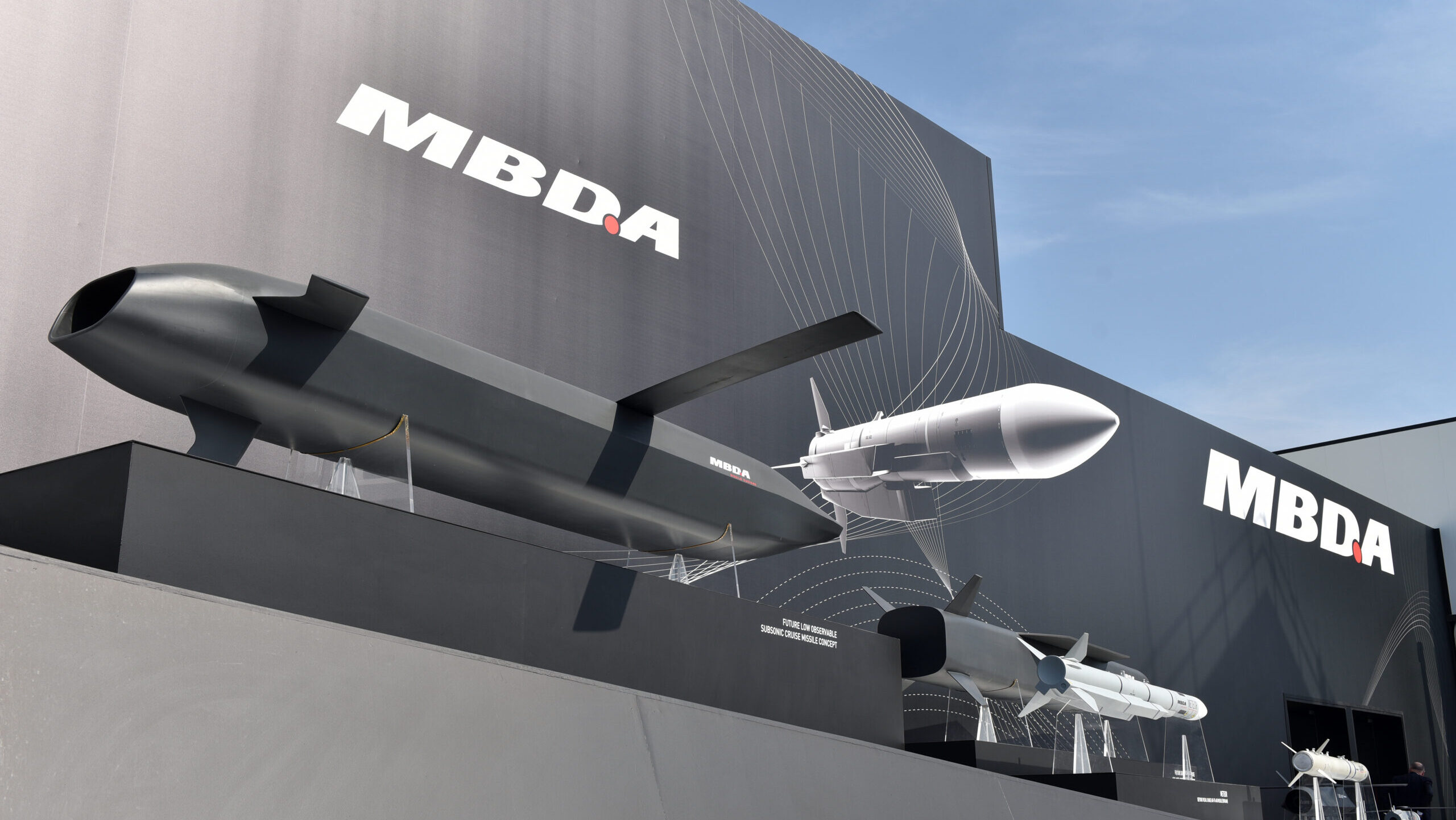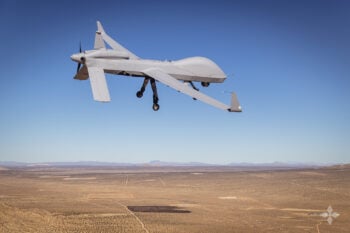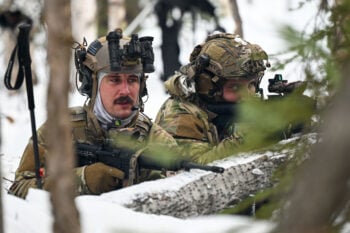
Missiles are displayed outside the MBDA exhibition hall during the Farnborough International Airshow 2022 on July 19, 2022 in Farnborough, England. ( John Keeble/Getty Images)
MUNICH — As world powers race each other for hypersonic dominance, senior officials at MBDA’s German arm and a subsidiary recently described the firms’ efforts to put hypersonic weapons to new uses, make them fly even faster and learn how to defend against them.
“Russia and China are never going to stop doing research in hypersonics, so thinking about hypersonics makes sense,” Dirk Zimper, MBDA Germany’s director of future systems, said at a media roundtable at the company’s headquarters in Schrobenhausen, near Munich.
Sporting a three-piece suit and pocket watch, Zimper presented hypersonic missiles as the “future of deep strike,” but also highlighted some interesting potential new uses for hypersonic missiles — in particular, a surprisingly short-range one: anti-armor. Speaking to Breaking Defense over lunch, Zimper said the company has been considering developing a new hypersonic anti-tank weapon, in support of the German military’s Hypersonic Technology Program, that would scream through a vehicle’s active protection systems.
The idea has been in the ether at MBDA for years, though Zimper declined to comment if a demonstrator had been produced yet. Already some explosively formed projectile munitions already travel at about Mach 4.5, but an anti-tank hypersonic munition would up that speed to at least Mach 5, the standard definition of hypersonic speed.
A subsidiary for MBDA, however, is looking at much faster speeds for hypersonic missiles in general. On the tour, a spokesperson for Bayern Chemie said it was involved in the design of “new materials for hypersonic applications,” including a new propellant design that could be combined with Ramjet technology to achieve speeds of Mach 6 or 7.
“The next step would be to test an engine and seeker head capable of withstanding [hypersonic] environmental conditions. At this speed, maneuverability is quite difficult,” the spokesperson said before suggesting system development and qualification could take years before production could begin.
“This could be quicker if investment is strong enough, but you’d have to change development cycles somehow, such as reducing qualification processes,” the spokesperson added.
Specific propellants currently in development at Bayern Chemie that could be suited to the support of a hypersonic missile include Ammonium Dinitramide or ADN — a composite propellant originally developed in Russia as a liquid propellant. Bayern Chemie has developed a solid ADN propellant that could be used for air-to-air and ground-to-air applications, the spokesperson said.
“[The propellant] is still in development after 10 years but we hope to be ready in two years,” they added.
As to whether that propellant would be used on deep strike hypersonic missiles, the spokesperson declined to say. MBDA France is already the prime contractor for the French Navy’s new submarine-launched hypersonic nuclear missile ASN4G, although a company official would not confirm the company’s exact role in the program. (The French government published documents in January that said in addition to sub launches, the ASN4G, “thanks to its limited size and weight, will be compatible with the Rafale [fighter] and [capable of catapult launch] from an aircraft carrier, in accordance with the objectives defined by the President of the Republic. This is a unique technical achievement in the world.”)
Strict firewalls remain in place between MBDA’s national entities in France, Germany, Italy, Spain and the UK, but industry sources suggested there could be certain levels in cooperation at government-to-government levels.
But even as they consider offensive applications, MBDA Germany said they were thinking about defense too.
Zimper said he didn’t consider Russia’s Kh-47M2 Kinzhal a true hypersonic weapon because, even if it flies at hypersonic speeds, it’s “not a marked hypersonic weapon because of its limited maneuverability.” Russia’s Avangard boost glide vehicle and China’s Dongfeng-17 system, however, are another story and are, in Zimper’s view, “credible hypersonic designs.”
“If you work in the defensive direction of hypersonics, you need to understand offensive hypersonic weapons,” Zimper said before outlining MBDA Germany’s role in the European HYDIS2 consortium, which is designing the “Aquila” endo-atmospheric interceptor to counter high-end and emerging threats.
“For counter-hypersonic, the focus must be on agility. For example, the interceptor doesn’t necessarily need to be hypersonic but it must be agile. We have invested a lot in the past and the next step is doing that in a European framework,” Zimper continued. For HYDIS2, Zimper said MBDA Germany brings a “very specific capability” in that it has an operational ramjet system.
Speaking more broadly about MBDA Germany’s outlook, the company’s managing director, Thomas Gottschild, described emerging requirements from the German armed forces for “higher combat mass, precision capabilities and new capabilities.”
In response, he said, the company must “ramp up our own activities.”
TAI exec claims 20 Turkish KAAN fighters to be delivered in 2028
Temel Kotil, TAI’s general manager, claimed that the domestically-produced Turkish jet will outperform the F-35 Joint Strike Fighter.


























